Anglers Booking Team
The expert copywriters at Anglers Booking have meticulously crafted this article. Our dedicated team of writers provides valuable insights and information to enhance your angling experience.
 28 minutes read
28 minutes readOften called the "Sunny Plains State," majestic Texas is rich in history, blending Southern spirit with cowboy culture. Its big cities and vast landscapes are unforgettable.
What makes Texas truly special is its incredible coastline, clear waters, and abundant marine life. This natural splendor makes it an angler's paradise, offering everything from Houston's lively waters to the serene shores of the Gulf of Mexico.

With that in mind, we've highlighted 20 premium fishing destinations in this guide. Each offers a unique atmosphere and diverse fishing opportunities, ensuring an unforgettable experience beyond just angling.
So, join us as we explore the sunny shores of Texas, from Galveston Gulf Coast gems like Port Aransas and Corpus Christi to the shy but majestic beauty of the Bolivar Peninsula and more. We promise you won't regret it!
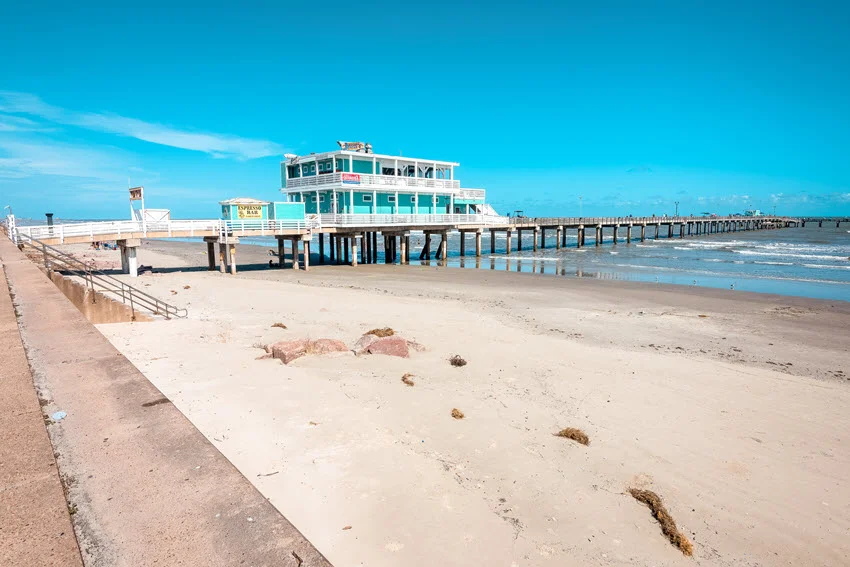
Located on the Gulf of Mexico coast, Galveston is Texas in miniature. It was the scene of significant historical events, still reflected today in historical architecture and a lively cultural scene. But what sets Galveston apart is its status as a top fishing destination, drawing anglers year-round.
Spacious beaches and Galveston's strategic location along the famous Gulf of Mexico provide access to various fishing environments and fish species. If you decide to fish offshore, you will be greeted by species such as Amberjack, Kingfish, and Mahi Mahi. And if you're more of a coastal type of angler, you can fill your fishing bucket with Trout, Redfish, and Flounder in the bays and estuaries, while jetties and breakwaters offer the chance to hook Black Drum or Sheepshead.
Fishing in Galveston never stops. Spring brings Kingfish and Red Snapper as Gulf waters warm, while summer (June to August) peaks with Tarpon and Shark fishing. Fall is prime for migrating Redfish, and winter (December to February) offers Flounder and Speckled Trout in cooler waters.
Through the eclectic culture that characterizes Galveston, it uniquely embodies the spirit of Texas with its relaxed atmosphere, striking beauty, and many fishing charters ready to guide you. Whether you are a seasoned pro or a beginner, Galveston has more than enough places to have an unforgettable experience. From the iconic Pleasure Pier to the historic Strand, it's no exaggeration to say it promises a catch to anyone who casts a line.
The city hosts several fishing tournaments, such as the Galveston Redfish Series and the Texas City Jaycees Tackle Time Tournament, which aim to compete and emphasize the importance of preserving the beautiful nature and fish that have given so much to Galveston.
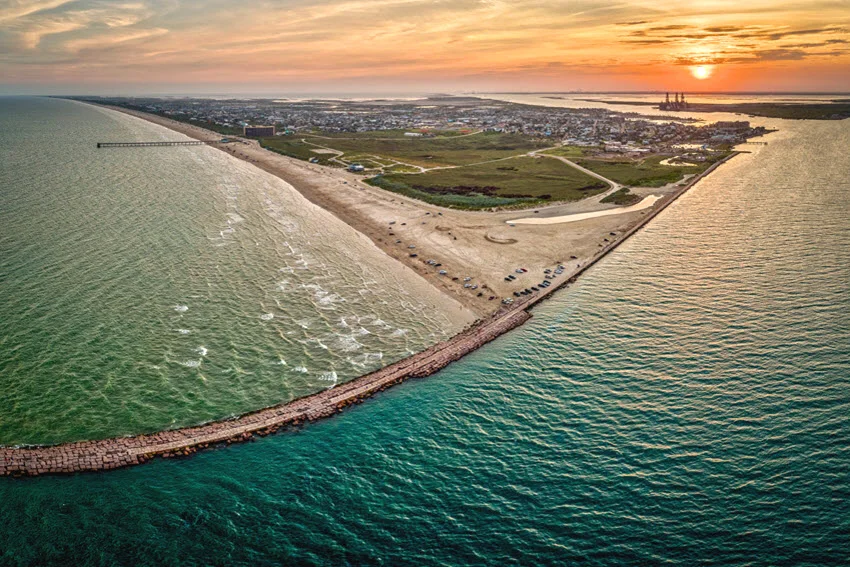
Ass the locals call it, Port Aransas is a true coastal gem of Texas fishing, coated on Mustang Island. It is a typical tame, charming small town with world-class fishing opportunities. The town is an excellent choice for anglers who are always looking for a big catch while bathing in coastal beauty. But, no worries, exploring offshore fishing areas is pretty straightforward if you want more.
The shallow bays and estuaries teem with Redfish, Speckled Trout, and Flounder, perfect for those who enjoy trolling or casting from a boat. And if you go into deep water, you will meet prime stars such as Marlin, Tuna and Dorado.
In principle, the best time for fishing in Port Aransas is spring, from March to May. Those months are peak season for Sea Bass and Speckled Trout. Summer brings warm waters and the opportunity to hunt big game species, like Marlin and Sailfish, in deeper waters. Fall is when Bull Reds dominate and can be found in large numbers as they migrate along the coast. Even in winter, you can cast and catch Flounder and Sheepshead.
But among other things, this is a place where you can relax and embrace the coastal lifestyle. Nature and conservation are at the very core of this city. In addition to fishing, you can explore reserves and parks, and as a special delicacy, you can enjoy the game of Dolphins in their natural environment.
Port Aransas also takes care of the art scene, so you can boast a lively art scene with galleries and studios that showcase local talent and works inspired by the beautiful coast. It also hosts regular exhibitions and workshops, making it a center of creative expression in the area.
The Port Aransas Museum offers a glimpse into the island's rich maritime past, with exhibits that tell the story of its development from a small fishing village to a knowledgeable and wealthy tourist destination. The nearby Farley Boat Works also contributes to this, where you can see artisans at work and even participate in hands-on workshops.
At the end of a long fishing day, you can Stroll along the sandy shore, explore the lively marina, enjoy fresh produce, or sign up for several fishing tournaments, such as the Texas Legends Billfish Tournament and Deep Sea Roundup.
In Port Aransas, fishing is a way to inherit a culture of relaxed living, a friendly atmosphere, and a community that truly appreciates its coastal heritage.
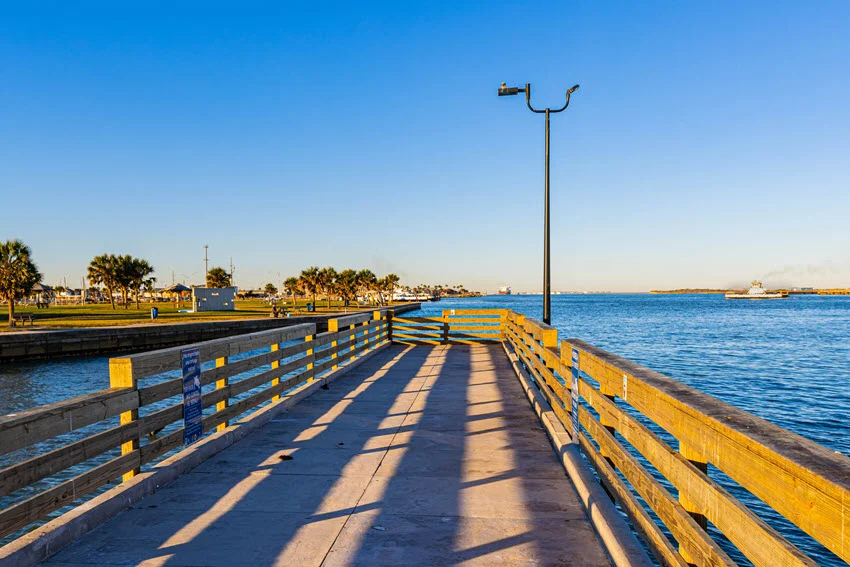
The "Sparkling City by the Sea," as Corpus Christi is joyfully called, is a lively and always singing mix of coastal beauty and rich history. It is also a treasure trove that has produced and continues to produce some of the best Texas anglers. Located along the southern coast of the Texas Gulf, what makes Corpus Christi stand out is its diverse fishing landscape that provides easy access to coastal and offshore areas.
On shore, you can explore the calm waters of Corpus Christi Bay and Laguna Madre, where Redfish, Speckled Trout, and Flounder abound. In contrast, the shallow waters are perfect for shallow-water fishing or a relaxing day of kayaking. Offshore, in the deep blue of the Gulf of Mexico, you can fish for big game such as Snapper, Kingfish, and even the mighty Marlin.
Fishing officially comes to life here from March to May, and increased numbers of Redfish and Trout herald the season and excellent action on the coast. Summer is the primary season for offshore action, and the stars are Kingfish and Snapper. With lower temperatures from September to November, some of the migratory species also arrive, and the season extends into the winter months when Flounder and Black Drum enter the scene.
Several artificial reefs and shipwrecks are located right off the coast, significantly adding to the magic and mystique of fishing here. These artificial structures create vibrant underwater ecosystems, attract a wide variety of marine life, and naturally contribute to conservation and enhancement efforts in these habitats. In this way, it is ensured that both recreational and commercial fishermen can enjoy sustainable fishing.
Corpus Christi's proximity to the Padre Island National Seashore, the longest stretch of undeveloped barrier island in the world, makes it possible to combine a fishing adventure with bird watching, camping, and exploring the island's pristine beaches.
Corpus Christi is a proud city that unequivocally embraces its coastal roots. It promotes these roots through fishing tournaments such as the Texas International Fishing Tournament and the Bay Bash Fishing Tournament.
Fishing is woven into the fabric of everyday life here, making it both tense and relaxed. With its stunning coastal views, friendly community, and abundant marine life, Corpus Christi invites you to discover why it is one of the best fishing destinations in Texas.
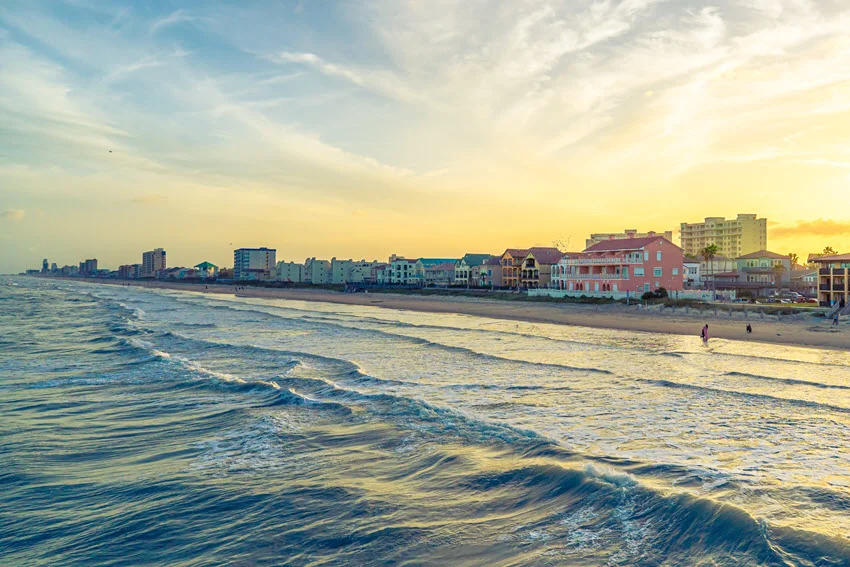
Lined with pristine beaches, South Padre Island fishing offers a sun-drenched paradise where the Gulf of Mexico meets a rich fishing tradition, vibrant nightlife, and endless adventures.
What makes South Padre Island unique is its access to a wide variety of fishing environments, from the shallow bays of the Laguna Madre to the mystical and very deep waters of the Gulf. On the coast, you can catch Redfish, Speckled Trout, and Flounder all year round, making it a favorite for those who enjoy sailing on a boat or kayak. The island's proximity to the continental shelf also means that deep-sea fishing is only a short boat ride away, meaning that landing prime fish such as Sailfish, Tuna, and Mahi Mahi are closer than you think.
In the spring, Redfish and Trout become more active, while the offshore is happening with the arrival of Walleye and Mahi Mahi. Summer is the season for deep-sea adventures, when the chances of catching Sailfish and Tuna dominate the waters of the Gulf. September through November is when the Walleyes begin their migration. From December through February, South Padre Island remains a fishing hotspot in winter since it has 300 sunny days a year.
South Padre Island is also a hot spot for eco-tourism. Tours are offered here, including dolphin-watching tours, birding expeditions, and sea turtle rescue programs, where participants have first-hand opportunities to participate in a mini-mission of nature conservation. The island's warm, clear water is also perfect for diving, revealing vivid coral reefs and an unbelievably beautiful array of underwater life. And for those who like to stick to land, there is an extensive network of hiking and biking trails.
South Padre Island hosts several seasonal events and festivals, such as Sandcastle Days and the South Padre Island Kite Fest, which add a cultural dimension and make the island a vibrant and dynamic destination year-round.
You can have a great time on this island. If you like competitive fishing, the Texas International Fishing Tournament and the South Padre Island Invitational attract anglers from all over the state and beyond.
With coastal and offshore waters combined with a relaxed atmosphere perfect for a seaside escape, this island paradise invites you to cast your line and indulge yourself in every possible way.
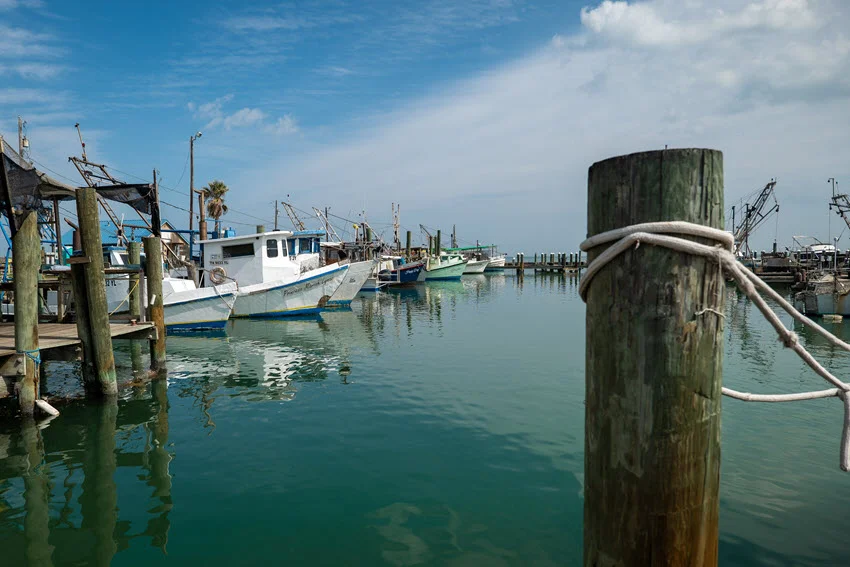
Rockport doesn't have the buzz of motorsports or the glitz of a big city, but you can think of this coastal charmer as the cool cousin of the best Texas fishing spots. It is a popular tourist and fishing spot with warm seasons, mild winters, and beautiful beaches. Located along the sparkling waters of Aransas Bay, Rockport is a slice of coastal paradise where the fish bite and the pace of life are blissfully slow.
You are in the right place if you enjoy easy access to life and fishing and prefer coastal fishing. You will not be pampered by the abundance of Redfish or Speckled Trout, especially with the awakening of the season in spring and summer. The city's fishing scene is full of variety – you can wade through the shallows, kayak along the shore, or cast from the pier, but also join in some adrenaline sports, such as water skiing.
From here, you can very quickly and easily reach the Aransas National Wildlife Refuge, which offers a refuge for lovers of many wild animals. The area is home to various bird species, including the endangered whooping crane. The park has landscaped trails and viewing areas, providing a peaceful escape into nature where you can experience the quiet beauty of the Texas coast.
Rockport fosters a close-knit community atmosphere that feels welcoming to visitors, which is why local festivals, such as the Rockport-Fulton Seafair, are there. It honors but also celebrates the city's maritime heritage with live music, seafood, and fun activities.
You could stroll through the artsy downtown, stop for fried shrimp, or relax on the beach and watch the waves roll in. There's also the famous Rockport Center for the Arts, which hosts numerous exhibitions throughout the year. The Fulton Mansion State Historic Site offers pristine beaches and nature preserves that provide plenty of opportunities for bird-watching or simply enjoyment.
Adding to Rockport's charm is the annual Babes on the Bay fishing tournament, which is exclusively for women in fishing. While Rockport may not be flashy, it has soul, with a significant influx of fish and spectacular sunsets.
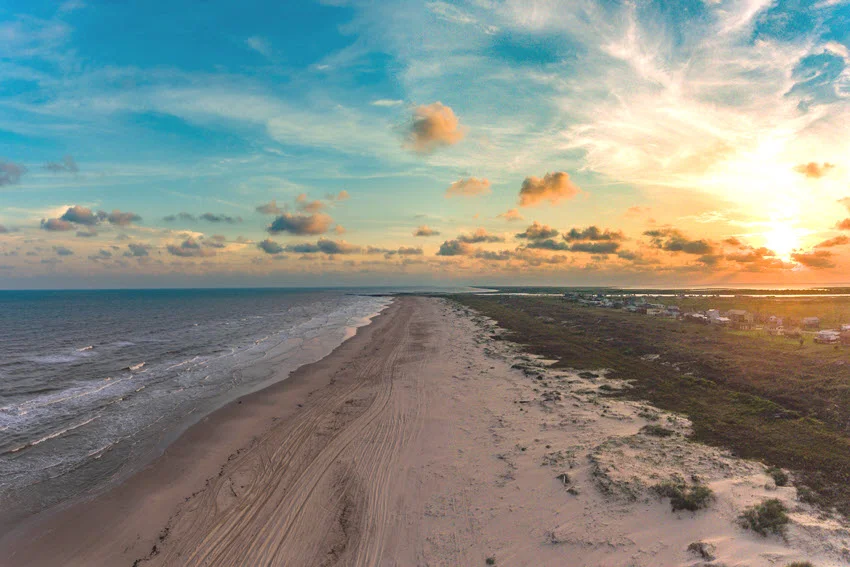
Matagorda Bay, a vast bay system located along the Texas Gulf Coast, is where all the raw power and beauty of the Gulf of Mexico meets some of the most exciting Texas fishing experiences.
The bay is a paradise for anglers, teeming with various species, starting with Red Sea Bream, Speckled Trout, and Flounder. These are the stars of the show here because the vast, broad plains of the bay and oyster reefs favor their feeding and abundance.
This bay and its surroundings have grown into what they are today thanks to the shrimp and crab industry and generally everything related to fishing.
There is a wide variety of wildlife in and around Matagorda Bay. The Mad Island-Oyster Lake Conservation Area is a natural habitat for more than 300 species of birds, including songbirds, shorebirds, and waterfowl. Further along the bay, you may encounter lynx, white-tailed deer, river otters, Texas hornbills, lizards, robins, and the inevitable alligators.
You can fish here all year round, with spring and fall being the best times to target these fish. Redfish school in the cooler months, and Speckled Trout bite best when the waters warm.
What best characterizes Mataruga is its untouched natural beauty and the unusual feeling of solitude. You seem to have inadvertently stepped into another dimension, but it is wrapped in a calm, relaxed atmosphere, and you feel you have stumbled upon a well-kept secret.
These shores are so vast that it's not uncommon to spend hours on the water without seeing a soul, just yourself, your line, and the expansive Texas sky. If you tire of fishing, you can explore the quiet beaches of the Matagorda peninsula and the marshes and maybe meet some wild animals.
From here, you can practice any technique, cast from the shore, wade through shallow waters, or venture out on a boat and look for a challenge in deeper waters. Yet despite the vastness of the vibe that can prevail, it is meditative and deeply peaceful. If you are looking for a fishing spot that is a little off the beaten track but full of potential, Matagorda Bay is calling your name.
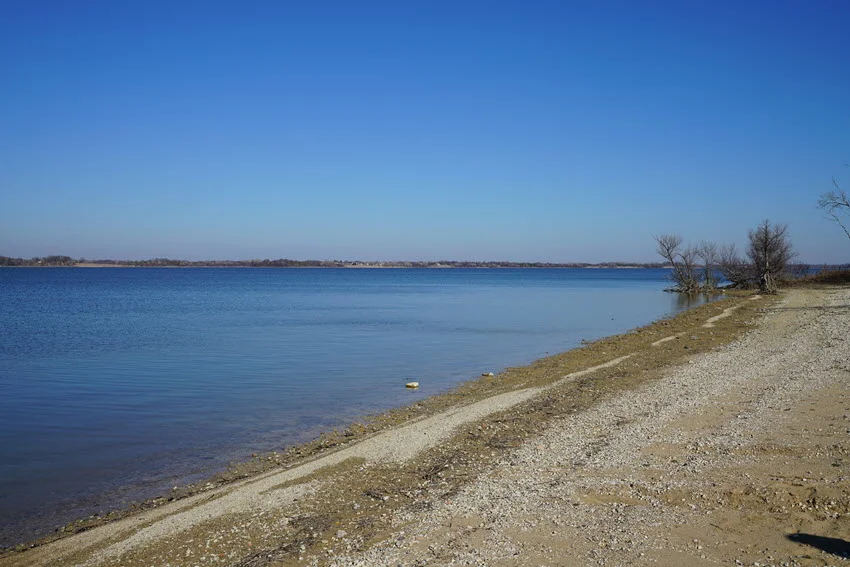
Without exaggeration, Lake Fork is truly a legendary place in the Bass fishing world. Located in the heart of East Texas, this lake has earned a reputation as one of the country's best Small or Largemouth Bass fishing destinations. Whether you're an old pro or a weekend warrior looking for a solid day on the water, Lake Fork offers fishing that keeps the stories alive and well for the next generation.
All the abundance and beauty are not only by chance but because Lake Fork has been carefully managed from the start, stocked with Florida's Largemouth Bass known for their size and fight. Also, The Lake Fork holds over 50% of the 50 largest Walleye ever caught in Texas. And alongside them is a healthy population of 4 to 8-pound Humpbacks that will keep your rod hooked all day.
You can fish all year round, and if you insist on being in the center of the action, then time it from February to April, when the big Humpback goes to the shallows to spawn, and the Bass is always there.
You can also catch Crappies, Catfish, and Sunfish here, which show up regularly and provide a bit of variety if you want to mix things up.
The truth is, though, that Lake Fork primarily nurtures Bass fishing and is undoubtedly the legend of the lake. The local fishing culture is strong, with plenty of guides ready to help you catch these fish, whether you're new to the lake or just looking to up your game. All this fascination with this species is rounded off by the legendary Sealy Big Bass Splash Tournament, where thousands of anglers compete for big prizes and even bigger bragging rights.
If you like fishing and especially enjoying the solitude of night fishing, Lake Fork also offers some exceptional opportunities. The peace of the night, combined with a perfect chance of catching a trophy Bass under the stars. The water of this lake is known for its clarity, making it an ideal place for sight fishing, especially in the early morning when the water is calm and the fish are actively feeding.
With numerous coves and bays to explore, if you insist on a more relaxed experience, the scenic surroundings of Lake Fork provide the perfect backdrop for a relaxing day on the water, where you can find your peaceful spot.
If Bass is your obsession or favorite fish, or if you are just curious to see what is so special about Lake Fork, it is best to come and see for yourself; maybe you will be carried away by Bass Mania.
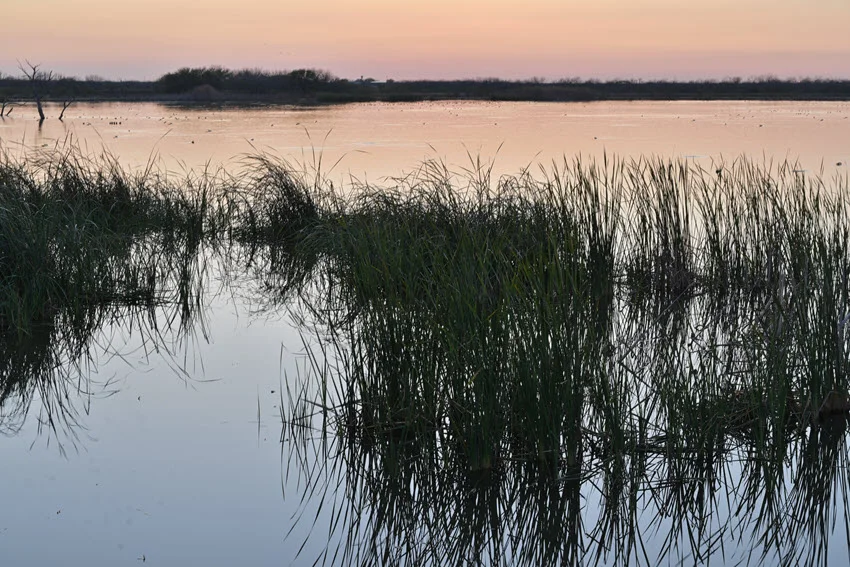
Suppose you are a fan of risk, not only in fighting with large and complex fish but also regarding location. In that case, Choke Canyon Reservoir is just such a place: the one Texas anglers go to when they're looking for a fishing experience that's as raw as it is rewarding.
Tucked away in the South Texas brush, this expansive reservoir is a hotspot for Largemouth Bass, as the waters are packed with layers of hydrilla, driftwood, and rock structures, creating the perfect environment for Bass to grow large and vibrant.
It is expected to catch Bass over 10 pounds daily, especially during the pre-spawn months of February and March when the fish are at their biggest. Although Bass is the dominant species, you can catch other fish here, typical of lakes and reservoirs, such as Crappies, Catfish, and White Bass. Crappie fishing picks up in the spring and fall when these fish move to shallower waters, while Catfish can be found year-round.
Choke Canyon offers an adventurous spirit that may not be apparent initially. This remote location means fewer crowds, giving you the feeling of having the entire lake to yourself. The sense of isolation adds to the excitement as you navigate the rugged terrain and discover hidden fishing spots.
If you like camping, you will not be disappointed either. This popular activity allows you to immerse yourself fully in the wild environment. There's plenty of maintained camping space, and as night falls, the sky comes alive with stars, providing the perfect backdrop for sharing campfire stories or planning your fishing strategy.
One of the unique aspects of Choke Canyon is the sense of solitude and untouched wilderness. Since the Reservoir is part of Choke Canyon State Park, you can also encounter the American Alligator or have sudden meetings with deer and various gardens of animals and birds.
Choke Canyon celebrates Texas's wilderness and natural beauty, its predominant ways and lifestyles, and abundant fishing opportunities.
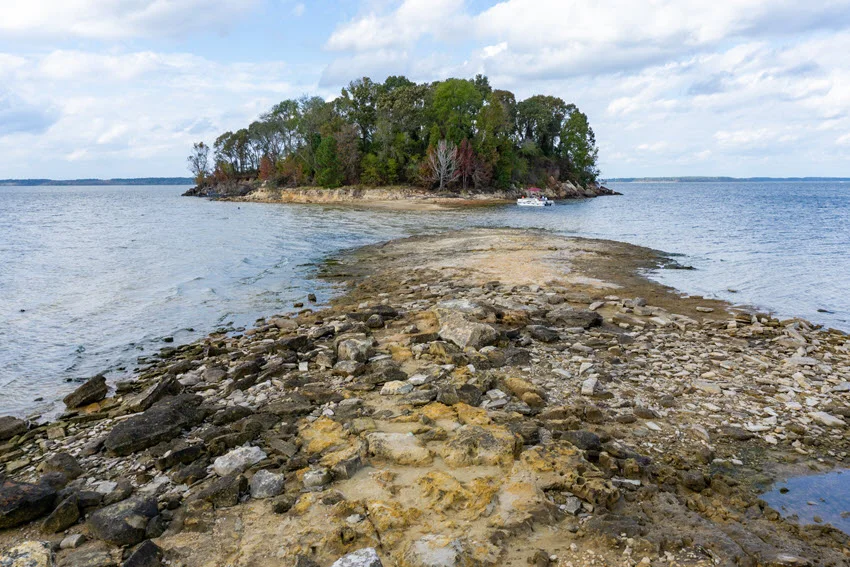
Often known simply as "Big Sam," it's one of those spots that seasoned anglers love with a mature love tempered by years of fishing. It is a fishing haven in a league of its own. Although the primary purpose of this lake is to generate electricity, it has existed for a long time, since the middle of the 20th century, and over time, it has become a key and essential place for fishing.
Located deep in the Piney Woods of East Texas, this massive body of water covers over 114,000 acres, making it the largest reservoir in the state. A stunning backdrop of towering pines surrounds it, so you can hike, camp, and enjoy a breathtaking lake view.
An extensive boat ramps and marina network provide easy water access to launch a boat, pontoon, or kayak. Nearby are the towns of Jasper and Zavalla, as well as numerous parks that offer a range of accommodations, from primitive campsites to fully equipped RV sites, for the ultimate luxury outdoor stay service.
The vast lake is a diverse and complex underwater habitat with miles of exceptionally spacious hydrilla beds and strategically placed brush piles. These create the perfect environment for fish to grow, especially Bass species. You can catch them on jigs or bottom fishing, and thanks to the rich nature, you can also collect live baits around.
Besides fishing, you can get to know Sam Rayburn Reservoir around or indulge in a slightly different fishing experience, where perhaps the focus is not exclusively on the catch but only contributes to a deeper understanding of nature. Calm mornings on the water, the excitement of a sudden fish attack, the beauty of the surrounding pine forests, and excellent hiking and bird-watching opportunities.
Although artificial, with care, the lake has, over time, created its unique ecosystem that fits perfectly with its surroundings. It's a place where every trip feels like an adventure, whether you're chasing your next trophy or simply enjoying the serenity of East Texas.
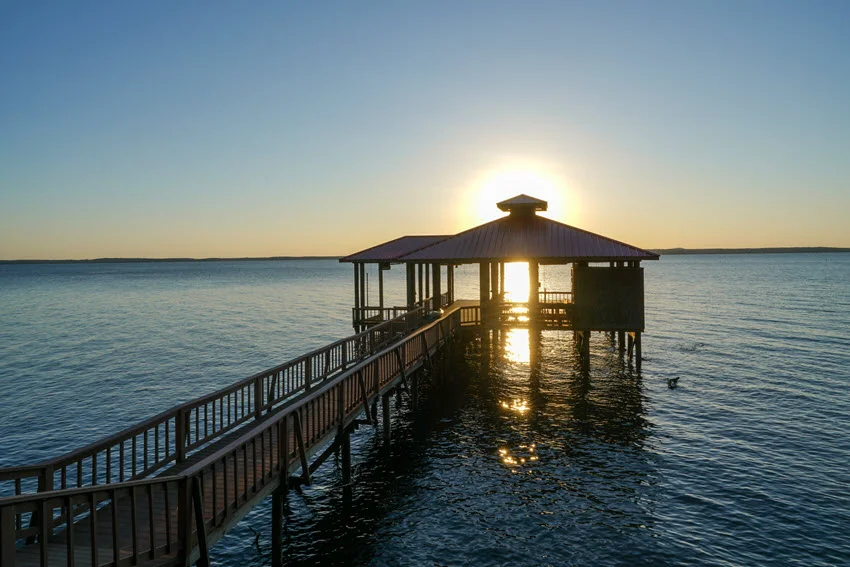
Straddling the border between Texas and Louisiana, this expansive reservoir spans over 180,000 acres and ranks among the largest artificial lakes in the United States. Generous with the amount of water, hidden bays teeming with life, and an underwater landscape rich in submerged trees, piles of bushes, and weeds.
You can catch anything here, led by the undisputed Bass population, especially during the spring and summer when it is the peak season. Targeting these fish around rich reservoir timber and deep brush piles is a good idea. Plenty of Catfish, especially Blue and Channel Catfish, make for excellent yearly fishing.
There are also other typical lake species, like Crappie and Bream. Crappie fishing is incredibly efficient in the spring when these fish move to shallower areas to spawn. On the other hand, Catfish are abundant throughout the year, and you can also catch them at night, which is quite a popular and cool way of fishing.
Large expanses of freshwater waters always inspire, poetically and romantically, but they also challenge discovering new fishing routes and options. The surrounding area also offers plenty of amenities by boat or shore, from boat rentals to guided fishing trips, making it easy to plan a fishing adventure.
The surrounding Sabine National Forest on the Texas side and the Kisatchie National Forest on the Louisiana side unashamedly spread out in all their glory, creating a lush, scenic backdrop perfect for any outdoor activity. Thus, the famous Bald Eagles are a frequent sight, hovering above the vast waters, completing this ode to nature and its power.
The reservoir hosts several annual fishing tournaments, making it not just a place to fish but a vibrant community hub. Anglers from all over gather to test their skills, share stories, and compete for prized catches, adding to the area's rich fishing culture.
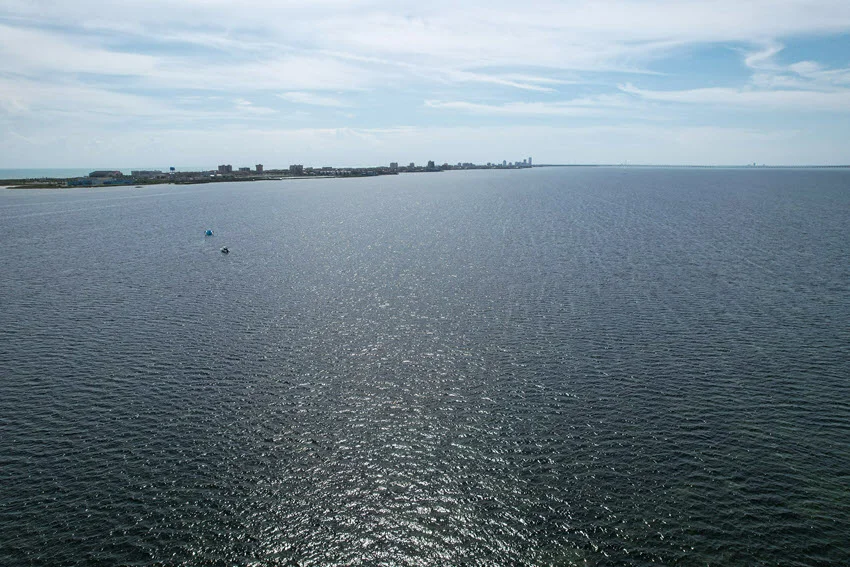
A unique and legendary stretch of the Texas coast, Baffin Bay is prized by more experienced anglers, particularly for its inviting waters and reputation for producing trophy-sized Speckled Trout. Located within the larger Laguna Madre, this bay is an alluring blend of history, rugged beauty, and one of the most rewarding fisheries in the state.
Another peculiarity of these waters is that they are hypersaline, which contributes to the growth of large, healthy fish, such as wonderful Trout over 30 inches long, commonly called "Alligator Trout." It is best to do this during the cooler months, from late fall to early spring.
Of particular note are its ancient "serpulid reefs," a rare and intriguing natural formation. These remains of ancient marine organisms transformed over time into an uneven seabed that provides ideal hiding places for wild fish. Such areas are always intriguing, and anglers come from far and wide to test their skills in these challenging conditions, hoping to catch one of the famous monsters, Trout.
However, Baffin Bay is quite remote, and the conditions are often tricky, windy, and wavy, which requires patience, skill, and a little persistence that can pay off big. Those who venture to Baffin Bay must be prepared for the seclusion of the bay, which provides an incomparable sense of peace and connection with nature, but such an experience is only for some. Remember that you have to prepare well and ensure everything is safe.
The isolation makes for a truly immersive experience, and the remoteness also means the waters are under less pressure, giving patient anglers a better chance of catching trophy Trout.
Baffin Bay undoubtedly provides a unique fishing experience that is equally intertwined with the bay's rich history and geological features, adding a layer of intrigue.
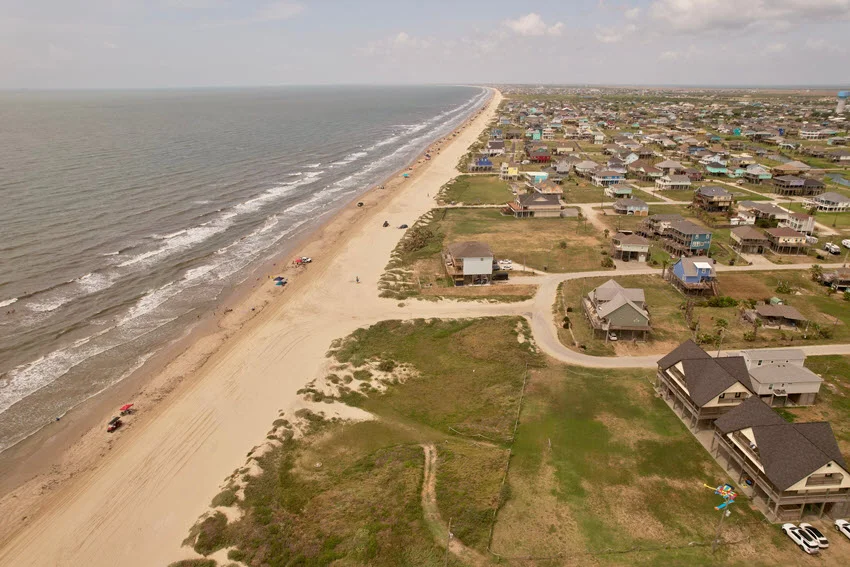
Stretching over 27 miles of coastline, the Bolivar Peninsula is a narrow strip of land bordered by the Gulf of Mexico on one side and the calm waters of Galveston Bay on the other. Both sides are surrounded by a vast coast, where fishing on a board is a primary pastime and a way of life. It is effortless to fish here from the shore, and the gentle surf and sandy bottoms make this place ideal for families and casual fishermen who want to enjoy a day by the sea.
All bays are specific and protected from strong winds, so the waters here are shallow and salty, perfect for sight fishing, kayak fishing, or wading. Fall is the period of dominance of Redfish. However, this species is present to a greater or lesser extent throughout the year, as well as Flounder, which is abundant in this area, especially during their fall migration. And, of course, you will often meet Spotted Trout and Sheepshead.
For those looking for a more structured fishing experience, the Bolivar Peninsula offers several fishing jetties extending into deeper waters and easier access to the depths where Spanish Mackerel, Pompano, and Sharks rule. The North Jetty near the entrance to Galveston Bay stands out in particular and is a hotbed for fishing activities.
The Bolivar Peninsula is home to many ecosystems, making it a haven for nature lovers and bird watchers. Various habitats Salt marshes, estuaries, and tidal flats attract a wide variety of bird species and other animals. In addition to fishermen, here you will meet lovers and admirers of nature in all its forms. The Anahuac National Wildlife Refuge is just a few minute's drive away. There are enough trails and vantage points to experience the local flora and fauna up close.
The peninsula also boasts several campgrounds and RV parks, and you can easily set up a tent by the beach or park an RV overlooking the bay.
If you're interested in local culture, the small communities around the peninsula host various events and festivals. After a long day on the water, you can relax in one of the local seafood shacks.
The charm of the Bolivar Peninsula is known for its relaxed, friendly atmosphere, where life takes place slowly. With miles of open beaches, charming coastal communities, and stunning sunsets over the water, it's a destination that offers much more than just a good day's fishing.
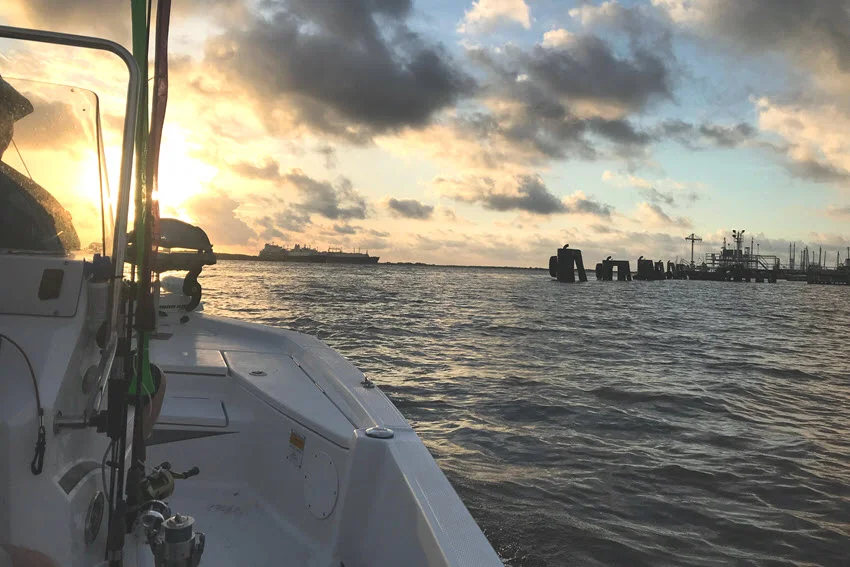
Formed by mixing the waters of two rivers, the Neches and the Sabine, the Sabine offers some of the best saltwater fishing in Southeast Texas. It has all the advantages of salt water but also the calmness of a lake. Spreading 90,000 acres on the border between Texas and Louisiana, it is a rich combination of saltwater and freshwater fishing opportunities, making it attractive to fish and anglers alike.
One of Sabine Lake's main fishing highlights is its thriving population of Speckled Trout and Redfish, two of the region's most sought-after game fish. Vast plains, swamps, and oyster reefs are very favorable for the growth of these fish; they can swim here all year round.
Spotted Trout are also active in spring and summer, and they often congregate in deeper channels and around numerous underwater objects. On the other hand, Snappers are a favorite target during the fall when they move into the shallows in large schools. The lake has parts of brackish water or a mixture of fresh and salty water, so here, you can also catch Flounder, especially during the fall migration when it moves from the bays and marshes to the deeper waters of the lake and beyond.
The freshwater influence from the Sabine and Neches rivers also brings in species like Largemouth Bass and Catfish, making Sabine Lake a place where you can realistically expect to catch both Speckled Trout and Largemouth Bass in the same day. This variety of species makes it an ideal destination for anglers who enjoy the challenge of changing techniques and targeting different fish throughout the day.
Given the lake's proximity to the Gulf of Mexico, you can also catch games such as Redfish, Spanish Mackerel, and even Shark her if you are a fortunate angler. These species are often attracted to the area by the affluent fish population, and anglers fishing from boats or shore near the pass can experience some exhilarating battles.
The lake is also surrounded by untouched natural beauty. Nearby is the Sabine National Wildlife Refuge, with its network of wetlands home to various birds and other wildlife. If you prefer rural areas, the nearby towns of Port Arthur, Texas, and Hackberry, Louisiana, offer a mix of convenience and local charm, with plenty of options for lodging, dining, and other outdoor activities.
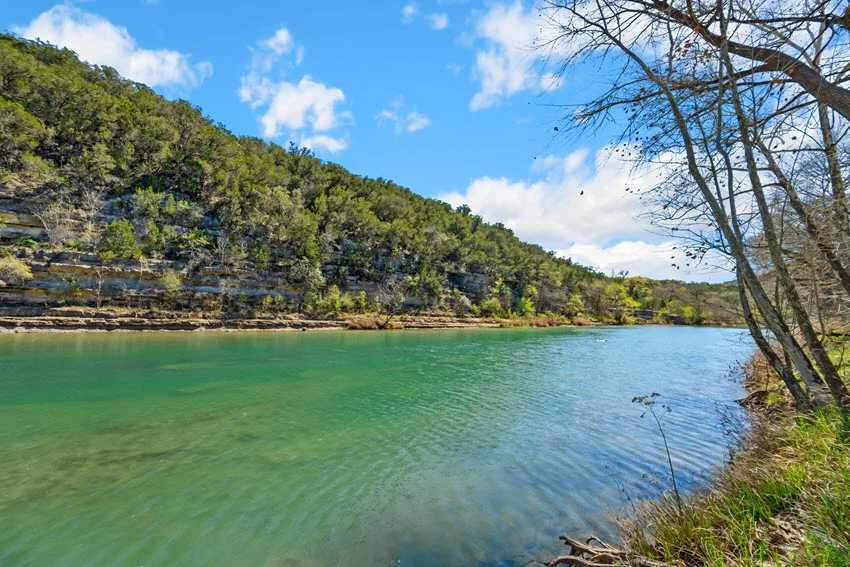
Winding its way through the heart of the Texas Hill Country, the Guadalupe River is over 230 miles long with the reputation of being the southernmost Trout fishery in the United States.
Thanks to the regular release of cold water from Canyon Lake Dam, the river maintains the ideal temperature for the development and abundance of a thriving population of Brown Trout, especially in the section known as the "Tailwater" below the dam.
At the same time, human resources also care about the abundance of these beautiful fish, and the Texas Parks and Wildlife Department stocks this area with thousands of Trout each year, creating a vibrant and active fishery. The best time to fish for Trout in the Guadalupe River is from November to March, when the water temperatures are ideal for these cold-loving species.
The river's clear water is also home to various native species, including Largemouth Bass, Smallmouth Bass, and the famous Guadalupe Bass, the state fish of Texas. You will find them in areas with fast currents and shaded banks. It is a special honor to catch a Guadalupe Bass, an exceptionally prized catch due to its limited range and intense fight.
Flowing through rolling hills, towering cypresses, and limestone cliffs, the river's scenery is as breathtaking as fishing.
The advantage of fishing on this river is the possibility of fishing in different environments within a relatively short stretch. Faster currents and rocky shoals characterize the upper reaches near Kerrville and are perfect for fly fishing. The river widens and deepens as you go downstream, offering slower pools perfect for baitcasting and casual fishing.
Almost all the waters are crystal clear, so you can go wading or sight fishing here. The river is a popular destination for tubing, kayaking, and canoeing, especially during the hot Texas summers. Riverside towns like New Braunfels and Gruene provide a charming mix of local culture, historic sites, and Texas hospitality. And if, in addition to fishing, you are also a very adventurous and curious tourist, then you must explore the nearby historic district of Gruene, famous for its dance hall and boutiques.
The Guadalupe River is also a hot spot for fly fishing enthusiasts and one of the most iconic locations in Texas for tubing. The river's different flow patterns create ideal conditions, especially in the colder months when the Trout are more active. Apparent sightings are always tempting, and specific techniques such as sight fishing or wading, which you can combine with fly-fishing equipment, are always irresistible.
If you plan to stay longer or combine fishing trips, the Guadalupe River offers several riverside campsites and lodges specifically designed for anglers. These are strategically located, offering easy access to prime fishing spots and guides nearby who can provide expert knowledge of the river's best-kept secrets.
The river's beauty and abundant fishing opportunities offer a quintessential Texas experience: a blend of natural beauty, rich biodiversity, and a relaxed atmosphere.
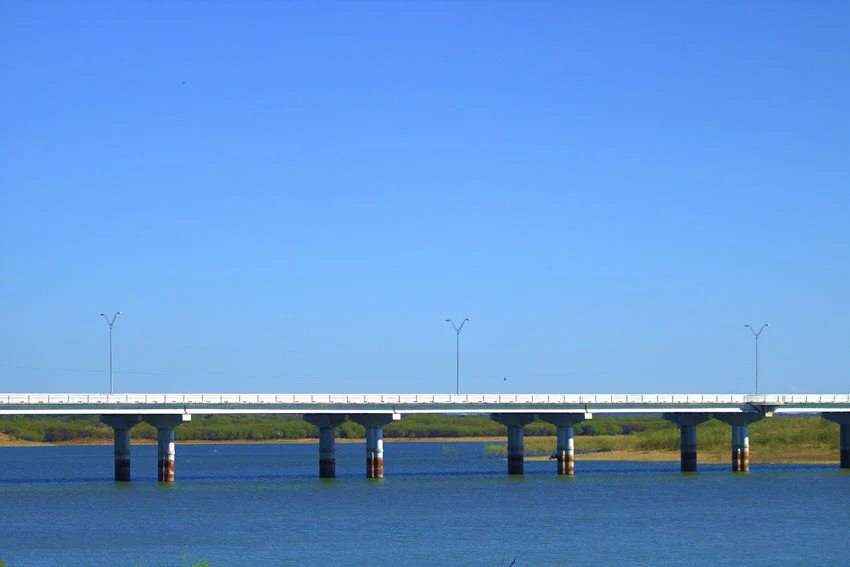
Falcon Lake, located on the Texas-Mexico border, is part of the Rio Grande River. From an angler's perspective, this spacious lake is known for its large trophy Bass, stunning landscapes, and unique blend of cultures authentically testify to the wild spirit of Texas and Mexico, which meet here and often merge to create a truly unforgettable experience.
These waters produce huge specimens of Bass, where they go and weigh over 10 pounds. The warm climate of the lake also contributes to a year-round Bass fishing season, and the best periods are during spring and fall when these fish are most active and aggressive. There is no shortage of other species, such as Catfish, Crappie, and White Bass. Catfish, especially blue and Channel Catfish, are available throughout the year.
In addition to fishing, Falcon Lake offers plenty of outdoor activities in the middle. The harsh beauty does not leave anyone indifferent. There, the lake's expansive waters are fringed with rolling hills, mesquite thickets, and cacti-dotted landscapes, which are a striking contrast to the blue expanse of the reservoir.
Almost any outdoor activity you can think of can be practiced here. This unique environment makes it an ideal place for boating, kayaking, and bird watching, as the area is home to various migratory and resident bird species, including hawks, herons, and waterfowl.
Falcon Lake is a significant and key location for many ecological studies because of its unique ecosystem that connects the two states. In addition to its massiveness, it has many different fish types. It is a natural playground for various fishing techniques, from traditional baiting to modern fly fishing.
Falcon Lake's specificity is that its water level can vary significantly depending on seasonal rainfall and the use of water from the Rio Grande River for irrigation.
And if you insist on active and always useful time management, rest assured. The surrounding historical sites tell the story of the region's rich cultural heritage. Several archaeological sites near the lake bear witness to ancient civilizations and offer insight into the history and culture of indigenous peoples.
You can even hunt game here; wild boar, deer, and various species of birds can be found in this area, and with permits and experience, you can try it, too.
The nearby Falcon State Park offers wilderness in its most beautiful, haunting, and mystical guises. Many additional recreational opportunities exist, including camping, hiking, and picnicking. The park is well-maintained and has picturesque views, making it popular for families and nature lovers.
It would be a shame to miss the local culture and community around Falcon Lake, like Zapata, Texas. This is where the most apparent fusion of Mexican and Texas culture collides. This cultural fusion is evident in the local cuisine, music, and traditions, offering visitors a unique experience beyond typical fishing.
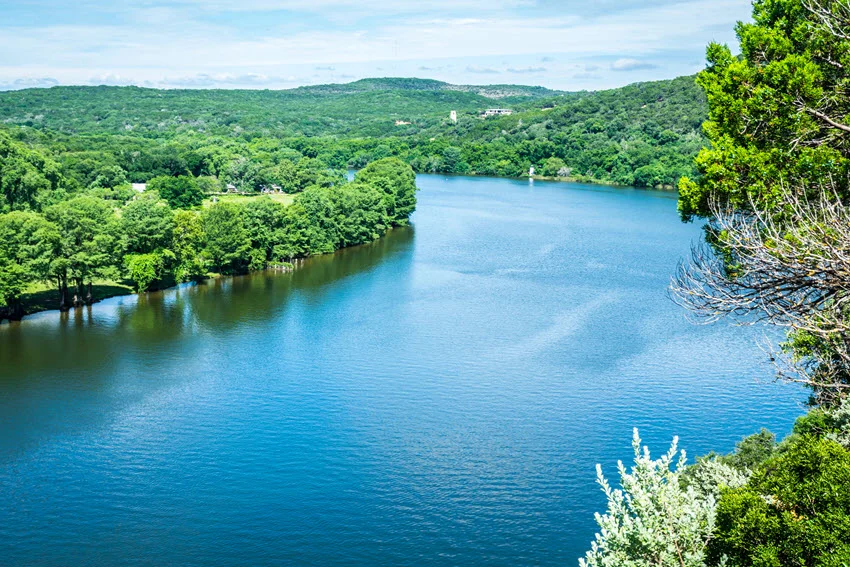
The Colorado River is an iconic waterway and the lifeblood of the Lone Star State. Stretching over 800 miles from the Hill Country to the Gulf of Mexico, this beautiful river is a diverse and dynamic ecosystem and, of course, you guessed it, a prime fishing spot.
Primarily, it is known for its healthy population of Sea Bass, thanks to the abundance of aquatic vegetation, submerged wood, and rock formations that create ideal habitats for developing these fish. The best spots are around Buchanan Lake, Inks Lake, and Lady Bird Lake. These parts of the river teem with Bass, especially in the spring when fishing for these species is most productive.
But the river fishing bounty has more than Bass. The Colorado River is also home to Catfish, Crappie, Sunfish, and even the occasional Guadalupe Bass. Catfish, Channel Catfish, and Blue Catfish are abundant throughout the river, and you can also find plenty of Crappies near submerged structures and deeper pools.
In addition to exceptional fishing, the Colorado River is a natural treasure that winds through some of the most picturesque scenery, From the rugged cliffs and lush valleys of the Hill Country to the serene lakes and rolling plains of Central Texas. This area is one of the favorites for those who love any outdoor activity, nature exploration, camping, hiking, wildlife, and recreation areas.
Whether exploring the Highland Lakes's calm waters or navigating adventurous stretches downstream, the river offers something for everyone. Wildlife enthusiasts will also appreciate the variety of bird species and other wildlife that call the riverbanks home, making it an excellent place for bird watching and nature photography.
The spectacular landscapes that change along the river's course are especially enchanting. Thus, the area around Austin, where the river passes through the city, offers picturesque views of the city skyline and the river's natural beauty. Over time, this has made it famous and iconic among recreationists, those who like activities such as kayaking and paddleboarding.
Several large reservoirs on the Colorado River, including Lake Buchanan, Inks Lake, and Lake Travis, are also known for their crystal clear water and excellent kayak, sight, or wade fishing conditions.
One of the Colorado River's most notable aspects is the efforts to preserve and protect natural resources. Parts of the river are protected as habitats for endangered species, including rare fish and birds. Traces of ancient peoples who left their mark along the river add to its beauty, and today, you can explore many historical sites and museums that tell the story of life along the river.
If quintessential Southern charm appeals to you, communities along the Colorado River, such as Bastrop, Austin, and Matagorda, are steeped in Texas tradition and Southern hospitality.
With world-class fishing, stunning scenery, and vibrant local culture, the Colorado River is a must-see destination for anyone looking to experience the true spirit of Texas.
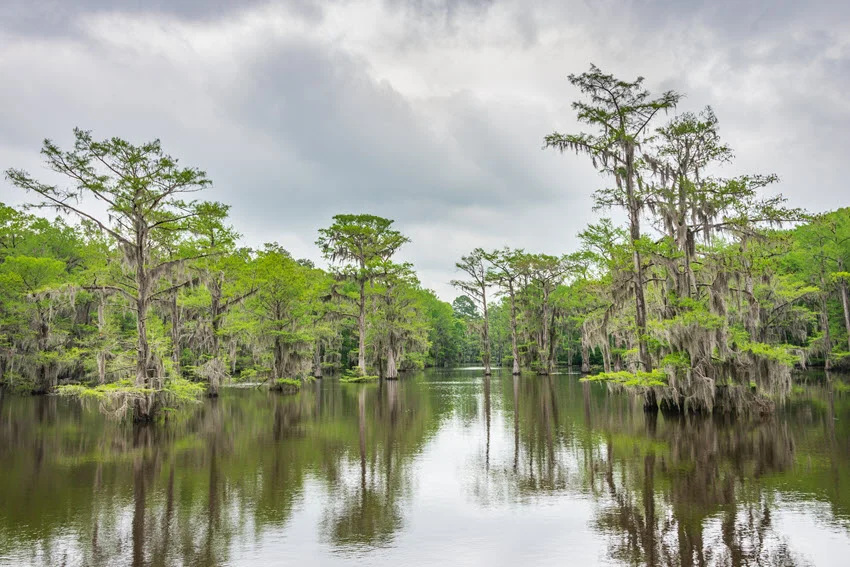
A mystical and enchanting lake located on the border between Texas and Louisiana, Caddo Lake is lined with lush cypress trees draped in Spanish moss and enriched by a labyrinth of bays, waterfalls, and wetlands. Here, time seems to stand still.
Nevertheless, the dynamics of underwater life exist, and this 26,000-hectare large lake is teeming with Bass, which dominates the cold water but is the main target of anglers. The natural beauty of the lake, combined with exceptional Sea Bass fishing, is enriching during the warmer months when it is a true hotspot for this species. If colder fall days are your favorite, then there is Bass because lower water temperatures suit it.
In addition to Largemouth Bass, Caddo Lake is home to various other fish, including Crappies. Crappies are often found around numerous cypress trees and underwater structures and in the lake. There are also Catfish, Channel, Blue, and Flat Catfish, which are plentiful and can be caught all year round.
Caddo Lake's most defining feature is its otherworldly landscape. The many cypress trees, draped in moss and reflected in the still, dark waters, create an atmosphere of mystery and peace, making this unique setting a prime location for fishing and kayaking, canoeing, and wildlife viewing.
One of the fascinating aspects of Caddo Lake and almost the entire Texas wilderness is its rich ecological diversity. There are so many birds, reptiles, and mammals that it can be overwhelming, especially in spring and summer when everything is singing.
The surrounding marshes are also home to alligators, which adds an element of risk to any fishing trip. But don't worry – as long as you follow the rules and adhere to the recommended safety measures, you can enjoy the presence of these ancient reptiles.
Bird watchers and nature lovers will also find that Caddo Lake is a haven for wildlife. The lake is home to various bird species, including egrets, egrets, and the occasional golden eagle. The surrounding Caddo Lake State Park offers hiking trails, picnic areas, and camping facilities, immersing visitors in its natural beauty.
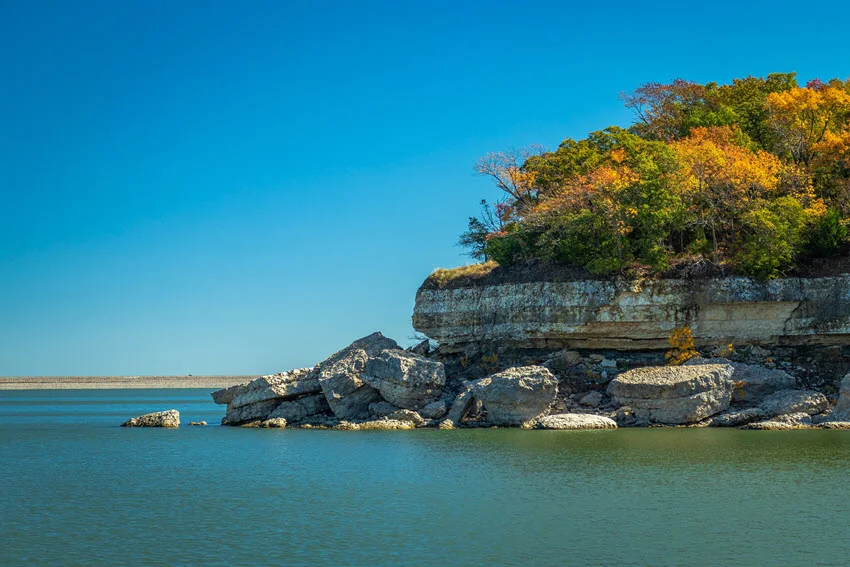
Lake Texoma is the wild child of Texas Lakes. Straddling the Texas-Oklahoma border, this watery country with its vast 89,000 acres of water is a playground for thrill-seekers, laid-back deckchairs, and anglers who don't mind a catch unless it's a big one.
Known as the Striper Capital of the World, anglers come primarily to hunt Striped Bass, and you can be sure that you will have a much stronger fishing battle here than you imagine.
Regarding fish species, Lake Texoma is like a fish buffet where you can choose your prey. In addition to stripers, you'll find Largemouth Bass, Catfish, Crappie, and even Bluegill. Whether trolling in deep water or casting near rocky outcrops, every trip promises something new.
Lake Texoma is and hosts some of the most competitive fishing tournaments in the region. Striper fishing tournaments on the lake are the stuff of legend, but it's not all about tough competition; there are plenty of local events for anglers of all levels, so whether you're a seasoned pro or a weekend warrior, you can always find something to suit your experience level.
The shores of this lake are dotted with state parks, marinas, and hidden coves that cry out for exploration. So you can rent a boat, go out on the open water, or find your private piece of paradise on one of the lake's sandy beaches.
When the fish aren't biting, you can trade your rod for a paddle board or sit back and enjoy the view, and the nearby towns of Denison and Pottsboro are where you can stop in for gear, food, or fishing advice.
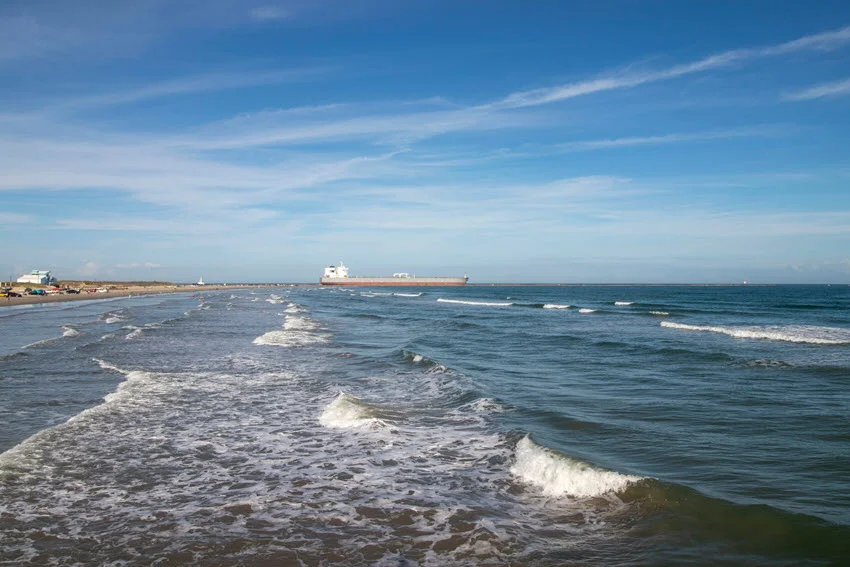
Located between Rockport and the barrier islands, Aransas Bay is one of those places where you can find waters of different character in a relatively small area, from shallow flats, winding channels, and oyster reefs to the cruelty and beauty of the deep ocean.
However, first, you will notice the beautiful coast and the anglers who successfully catch Redfish and Spotted Trout from here, especially during the warmer months when the bay's shallows warm up and the fish become more active. In season, you can also catch Flounder, Black Drum, and Sheepshead in the coastal area.
If you venture further afield, you may be treated to a catch of Tuna, Shark, or Snapper. Drift fishing, surf fishing, or any type of fishing from the shore – there are many methods where you can indulge in your favorite fishing technique. Nearby is Rockport Beach, with its calm waters and sandy shores, an inspiration for relaxation, fishing, and some extreme fishing spots.
In addition to incredible fishing, Aransas Bay offers a backdrop of stunning natural beauty. As the bay is part of the larger Aransas National Wildlife Refuge, you can witness various bird species here, including the famous whooping cranes that migrate here in winter. You can explore by kayak, bird watching, or enjoy hiking and water activities here.
Nearby are the cities of Rockport and Fulton, which have an urban, contemporary feel but are deeply imbued with coastal culture. They have a casual yet relaxed atmosphere that welcomes everyone warmly without asking too many questions. Art galleries and shops reflect the area's rich history, connection with the sea, and the nurturing and preservation of that tradition.
The primary fishing seasons are in spring and fall when there are the most fishermen. During these periods, the water temperatures are perfect for coastal species such as Redfish and Speckled Trout, and many migratory species also approach the coast. However, you can come whenever suits you because the fishing action here never sleeps.
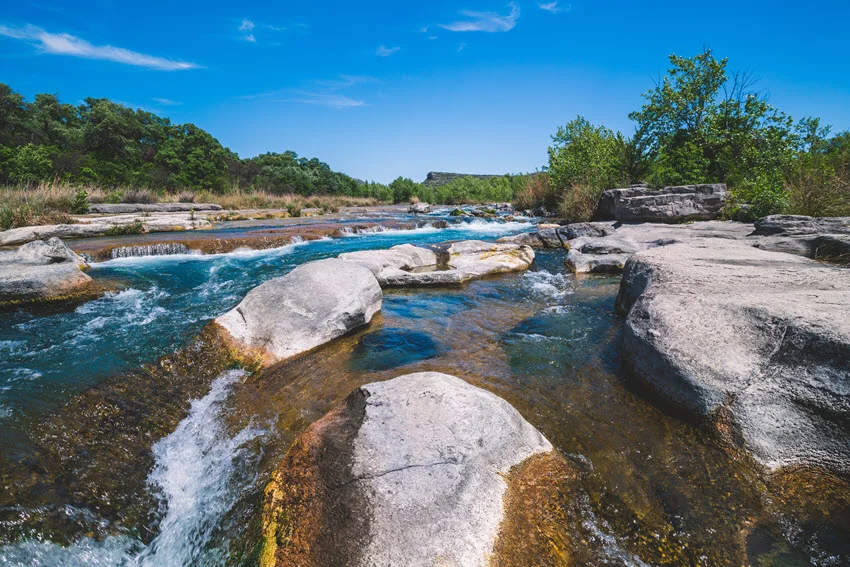
The Devils River is not named that way by chance! Almost along its entire course, this rough and untouched waterway offers an adventure with a touch of danger, risk, and uncertainty – but also a great catch! Tucked away in the wild landscapes of West Texas, the fierce and untamed Devils River meanders proudly through dramatic canyons and crystal clear pools and is as beautiful as it is dangerous.
If you love solitude and yearn to fish in places like this, Devils River is where dreams come true. It is almost pure, raw nature, with vital, free water known for Smallmouth and Largemouth Bass, both of which thrive best in cold, clear waters. Smallmouths, in particular, are the stars here, often cited as some of the best in the state. They are favored by an underwater structure consisting of rocky ledges, deep pools, and fast currents.
Fly fishing and boating are popular methods here, and many anglers prefer to float down the river in kayaks or canoes, casting into eddies and under overhanging cliffs. Of course, for this, you need top equipment and great experience.
One of the most striking aspects of the Devils River is its remoteness, as this is not a place you just happen to stumble upon. Devils River requires detailed preparation, careful planning, and a sense of adventure. Access points are limited, and many parts of the river can only be accessed by boat, meaning you must be prepared for harsh conditions.
The area through which it flows is also stunning: high limestone cliffs, lush coastal zones, and abundant wildlife, with ancient rock art sites hidden within canyon walls. Details and traces of the lives of Indian tribes add to the mystique of this beautiful landscape, and hiking trails lead to panoramic viewpoints for those willing to explore by hiking.
Take care not to pollute the water and the environment with anything because the Devils River promises an unforgettable trip to one of the most unusual corners of the Lone Star State.

Understanding fishing regulations in an area is crucial for protecting fish populations and ecosystems and promoting responsible angling practices.
Anglers Booking team
To fully embrace the fishing opportunities that Texas has to offer, it is clear to you, after our detailed introduction to the vastness and wilderness of this state's natural beauty, that securing the proper fishing licenses is essential to preserve it.
Having the basic and all the specific permits, which can vary depending on where you fish and what you fish, not only helps anglers stay in compliance with state regulations but also supports the preservation of Texas' rich aquatic ecosystems for the future. A lot is invested in the conservation of nature, and everyone who plans to fish must contribute to it by having permits and complying with all the instructions and regulations related to the place where they fish.
Texas, known for its diverse fishing environments, requires different fishing licenses depending on the location and type of fishing. For example, if you plan to fish in Lake Texoma, you must know Texas and Oklahoma fishing regulations since the lake straddles the state line. Thus, Texas requires anglers to have a freshwater fishing license to fish in Lake Texoma. In contrast, you need a Texas saltwater fishing license to target saltwater species in Galveston Bay.
The Texas Parks and Wildlife Department (TPWD) is the regulatory body that issues and oversees fishing permits and monitors all efforts to preserve fishing and natural biodiversity in the rut. They regularly monitor fish populations, implement fishing regulations, supervise fishermen, and check the possession and validity of fishing licenses.
Since props are subject to change, you must monitor them regularly. They may include fishing season restrictions, size limits, and bag limits for various species. Likewise, TPWD also occasionally issues temporary closures or special permits for unique fishing events or conservation projects.
TPWD's core mission is to balance the conservation of fish and wildlife resources with the enjoyment of recreational activities. Before heading out on your fishing adventure, check the specific regulations for your chosen location and obtain the necessary permits. You will indeed find fishing more relaxed, and at the same time, you will contribute to the sustainability of Texas's rich aquatic ecosystems.
As we finish our trip through the exceptional fishing destinations of Texas, we believe that you understand why Texas is the Lone Star State and what fishing opportunities this spacious and mystically beautiful state blessed with nature hides!
Whether you love secluded trips to mountain or ocean areas, lake or river waters, or you want to combine everything, even if you see a shark, alligator, deer, and some exotic bird in one day, you can do all this! You only need to choose a suitable location from our selection of Texas's top 20 fishing destinations.
Such a natural diversity of landscapes and water bodies provides the option of incredible research and practice of all possible fishing techniques! If you have time, it would be wonderful to visit all the locations and explore the waters and the surroundings, because it is impossible to get bored.
If you are focused exclusively on fishing, from the wonderfully large Bass and Trout to the inevitable Redfish, let's be realistic: the fishing here is magical and almighty!
We invite you to share your Texas stories, plans, photos, and tips with our community. Our comments section is your platform to share tips, techniques, and personal experiences that can further inspire and guide someone on the fishing expedition of a lifetime! We look forward to hearing from you. Sturdy line and happy fishing!

The expert copywriters at Anglers Booking have meticulously crafted this article. Our dedicated team of writers provides valuable insights and information to enhance your angling experience.
Embark on unforgettable fishing adventures with us at Anglers Booking.
book your charterOctober 17, 2025
October 15, 2025
October 10, 2025
October 11, 2025
October 4, 2025
September 29, 2025
September 25, 2025
September 21, 2025

You're now part of our exclusive community. Get ready for premium content and updates straight to your inbox.
close
Subscribe to our newsletter and receive a selection of cool articles every week.
Please enter a valid email address.

Be the first to know when we're back in action.
Please enter a valid email address.
Leave a Comment
Your email address will not be published. Required fields are marked *
Thank you for your comment! It has been submitted for review and will appear on the site shortly.